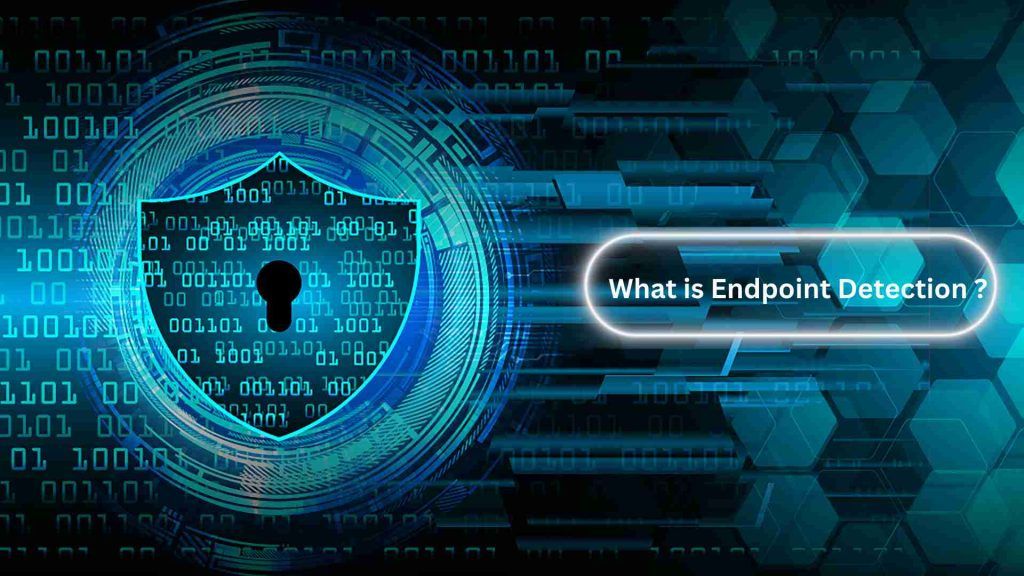Advanced cybersecurity threats are a dark cloud hanging over modern businesses. But two bright rays of hope exist – endpoint detection and response (EDR) and security information and event management (SIEM).
These technologies provide core safeguards for enterprise infrastructure and data. Even better, their capabilities complement each other extraordinarily well. Together, EDR and SIEM establish a formidable security barrier.
In this article, we’ll explain what EDR and SIEM are, their distinct capabilities, and why layering both solutions enables robust protection and risk reduction.
Table of Contents
Endpoint Detection and Response (EDR)

As the name suggests, EDR focuses on directly safeguarding endpoint devices like employee laptops, company servers, virtual desktops, and mobile devices.
Key capabilities EDR platforms provide:
- Install agents on individual endpoints to monitor activity and detect threats.
- Leverage AI and advanced analytics to identify attack indicators and patterns.
- Block or isolate infected endpoints to promptly contain threats.
- Enable remote investigation and remediation of compromised endpoints.
- Orchestrate incident response across other security tools through automation.
EDR is your instant first responder, quarantining endpoint threats before they can spread farther into the environment. EDR provides continuous real-time visibility into your most vulnerable and critical assets – endpoints.
Security Information and Event Management (SIEM)
In contrast to EDR’s endpoint view, SIEM solutions aggregate and analyze security event data from across the entire digital environment – endpoints, networks, servers, applications, cloud services, etc.
Key aspects of SIEM platforms:
- Collect and correlate diverse security event data from installed agents, existing security tools, and other sources.
- Establish behavior baselines then detect anomalies and threats.
- Provide centralized visibility through security dashboards and drill-down capabilities.
- Generate notifications and alarms based on customizable policies.
- Enable threat hunting by allowing forensic investigations into historical activity.
- Produce reports for compliance and auditing requirements.
While EDR acts as the emergency first responder, SIEM is central command coordinating the big picture response and gaining insights to prevent future incidents.
How EDR and SIEM Work Better Together
On their own, both EDR and SIEM provide immense security value. But layered together, their distinct capabilities offer even more robust protection.
Some examples of EDR and SIEM complementing each other:
- EDR detects and contains infections on individual endpoints in real-time. SIEM analyzes the broader impact and scope across the environment.
- SIEM alerts drive faster investigation and remediation through EDR’s instant endpoint visibility and response toolkit.
- Threat intelligence gathered by SIEM helps tune EDR policies and machine learning models to improve prevention.
- Endpoint insights from EDR give SIEM the raw data needed to reveal attack chains and impacts that would otherwise be invisible.
In short, EDR excels at identifying threats and promptly disrupting them. SIEM makes sense of security events to gain insights that strengthen long-term security posture.
Benefits of Integrating EDR and SIEM
Here are some of the key advantages organizations realize by layering SIEM and EDR:
- Broader threat detection range spanning from endpoints to the network perimeter. No blindspots.
- Unified visibility and correlation under a single security analytics umbrella.
- Agile containment of threats through automated workflows between EDR and SIEM.
- Speeded investigation and response powered by integrated endpoint and network event data.
- Advanced threat hunting capabilities fueled by fused data sources and AI.
- Continuous policy and configuration improvements as new attack methodologies emerge.
- More effective compliance audits through expanded event capture and reporting.
For optimal security, EDR and SIEM integrated together simply make sense.
Making the Merger Work
While EDR and SIEM solutions are designed to connect together, here are a few best practices for successful deployments:
- Start with foundational SIEM coverage, then layer on EDR for prioritized endpoints. Avoid blindspots.
- Right-size infrastructure to ingest and store the high volume of enriched data from EDR and SIEM event feeds.
- Develop automated response playbooks between platforms to maximize threat containment speed.
- Involve both security and IT operations teams in planning and utilization to bridge visibility gaps.
- Implement machine learning tools to identify critical threats amidst a sea of alerts.
- Leverage both technologies to continuously fine-tune policies and configurations as new attack methods emerge.
The Winning Combo: EDR + SIEM
Modern cybersecurity demands next-gen tools. EDR provides real-time threat disruption at the endpoint level. SIEM enables big picture visibility, management, and insights – crucial for hardening security posture. Together, they offer comprehensive monitoring, detection, and response capabilities.
While challenging, skimping on critical security foundations like EDR and SIEM leaves the door open for cyber incidents and resulting disruption. The stakes are too high not to implement layered defenses.
With bad actors constantly evolving tactics, EDR and SIEM capabilities integrated together establish an agile, formidable security barrier protecting enterprise environments now and into the future.
Conclusion
Advanced threats demand next-gen security tools. EDR and SIEM together establish a robust, layered defense securing business infrastructure and data.
EDR provides real-time endpoint monitoring, detection, and disruption. SIEM enables connecting the dots enterprise-wide to extract security insights that strengthen long-term posture.
Integrated together, EDR and SIEM offer comprehensive capabilities today’s organizations need – from instantly isolating infected devices to revealing attack patterns informing smarter policies.
As cyber risks grow, EDR plus SIEM is emerging as a security best practice. With bad actors constantly evolving tactics, the visibility, analytics and responsiveness this winning combo provides give organizations an agile advantage.
FAQ’s
EDR installs software agents on individual endpoints. SIEM requires centralized infrastructure to aggregate and analyze network data.
Security analysts who can configure policies, tune detection, and drive automated response workflows maximize value.
Regulations like PCI DSS, HIPAA, and NYDFS require robust security monitoring, auditing, and reporting – capabilities SIEM delivers.
EDR costs are typically per endpoint agent. SIEM has high upfront infrastructure costs but protects all connected systems.
